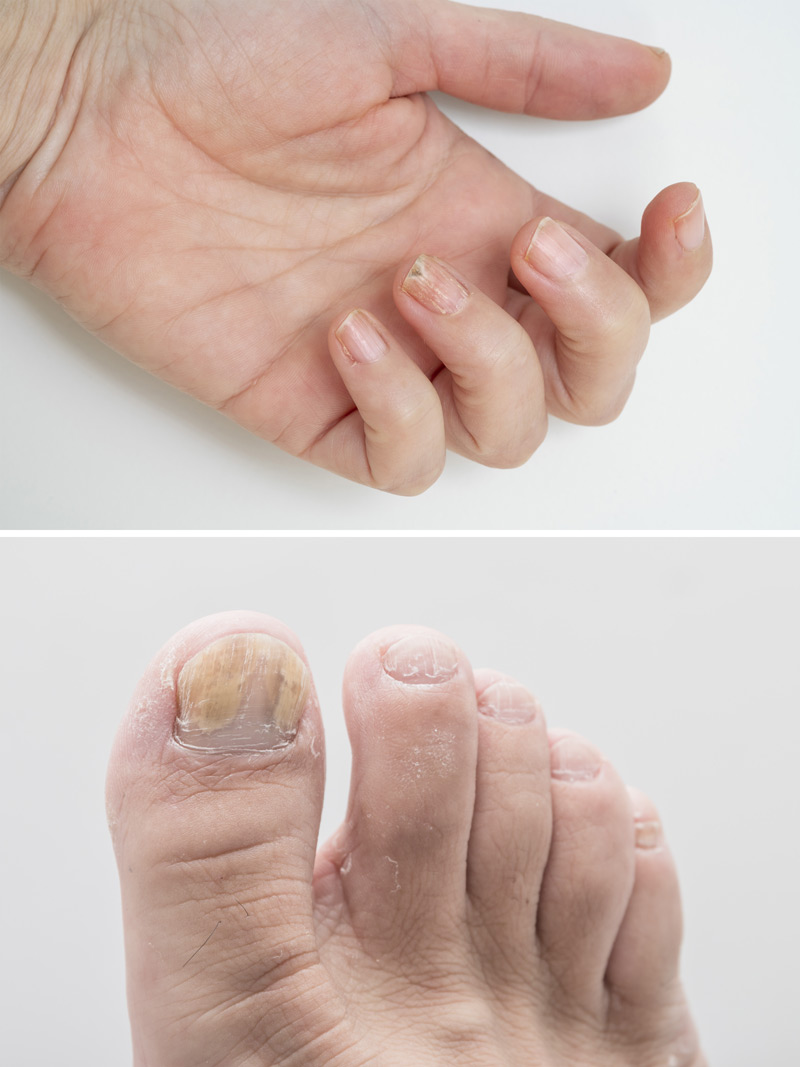If you have dystrophic nails, your nails might look thick, oddly shaped or colored yellow or brown. Usually, these nail changes happen because of a skin condition or infection. The first step in treating dystrophic nails is finding the cause. Then, your healthcare provider can recommend the best treatment option for you.
Advertisement
Cleveland Clinic is a non-profit academic medical center. Advertising on our site helps support our mission. We do not endorse non-Cleveland Clinic products or services. Policy

Dystrophic nails are fingernails or toenails that are deformed, thickened or discolored. They can have various causes, ranging from toenail fungus to a skin condition.
Advertisement
Cleveland Clinic is a non-profit academic medical center. Advertising on our site helps support our mission. We do not endorse non-Cleveland Clinic products or services. Policy
Dystrophic nails are common in:
Dystrophic nails can be painful, especially if they curve into your skin and cause ingrown toenails. You might also be bothered by how your nails look. Even if they don’t hurt, always tell your healthcare provider about any changes to your nails. You may need treatment for the underlying cause.
Some people have one dystrophic nail, while others have several. Dystrophic nails may be:
Dystrophic nails happen when an infection or injury damages your nail or nailbed. Causes of dystrophic nails include:
Dystrophic nails can be contagious if they’re caused by toenail fungus. But if the problem is caused by trauma or psoriasis, you can’t spread it to others.
Advertisement
Dystrophic nails aren’t a disease. They’re a sign that something else is wrong with your nails or nailbed. Your healthcare provider will look at your nails and discuss your health history to determine the cause.
Your healthcare provider may identify dystrophic nails after looking at your nails. The next step is diagnosing the cause or ruling out health conditions. Tests that can help determine the cause of dystrophic nails include:
Treatment for dystrophic nails depends on the cause. Your treatment may include:
Don’t try to treat dystrophic nails without your healthcare provider’s help. Nail problems can get worse and lead to serious infections, especially if you have diabetes or other health conditions.
If your nail was damaged by trauma, the damaged nail may take several months to grow out. See your healthcare provider so you can discuss the best way to treat your nail while it heals.
Dystrophic nails usually aren’t serious. But some conditions that cause it, such as toenail fungus and psoriasis, require medical care.
If you have diabetes, check your feet regularly for cuts and small injuries, including nail problems. Even minor foot injuries and nail problems require medical care because they can lead to infections.
There isn’t a guaranteed way to prevent dystrophic nails. But you can help prevent toenail fungus if you:
Advertisement
Nails are an important indicator of your overall health. If you notice changes to any of your fingernails or toenails, make an appointment with your healthcare provider. Check all of your nails regularly for:
You might want to ask your healthcare provider:
Dystrophic nails don’t have to become a serious problem. The common causes of dystrophic nails — like toenail fungus and psoriasis — are treatable. And if you have diabetes, early treatment of foot and nail problems can prevent complications like infections. Your healthcare provider can pinpoint the cause so you get the right treatment. In many cases, proper treatment will reveal healthy nails again.
Advertisement
When you have an inflammatory or autoimmune condition, you need experts by your side. At Cleveland Clinic, we’ll create an individualized treatment plan for you.

Last reviewed on 03/01/2022.
Learn more about the Health Library and our editorial process.